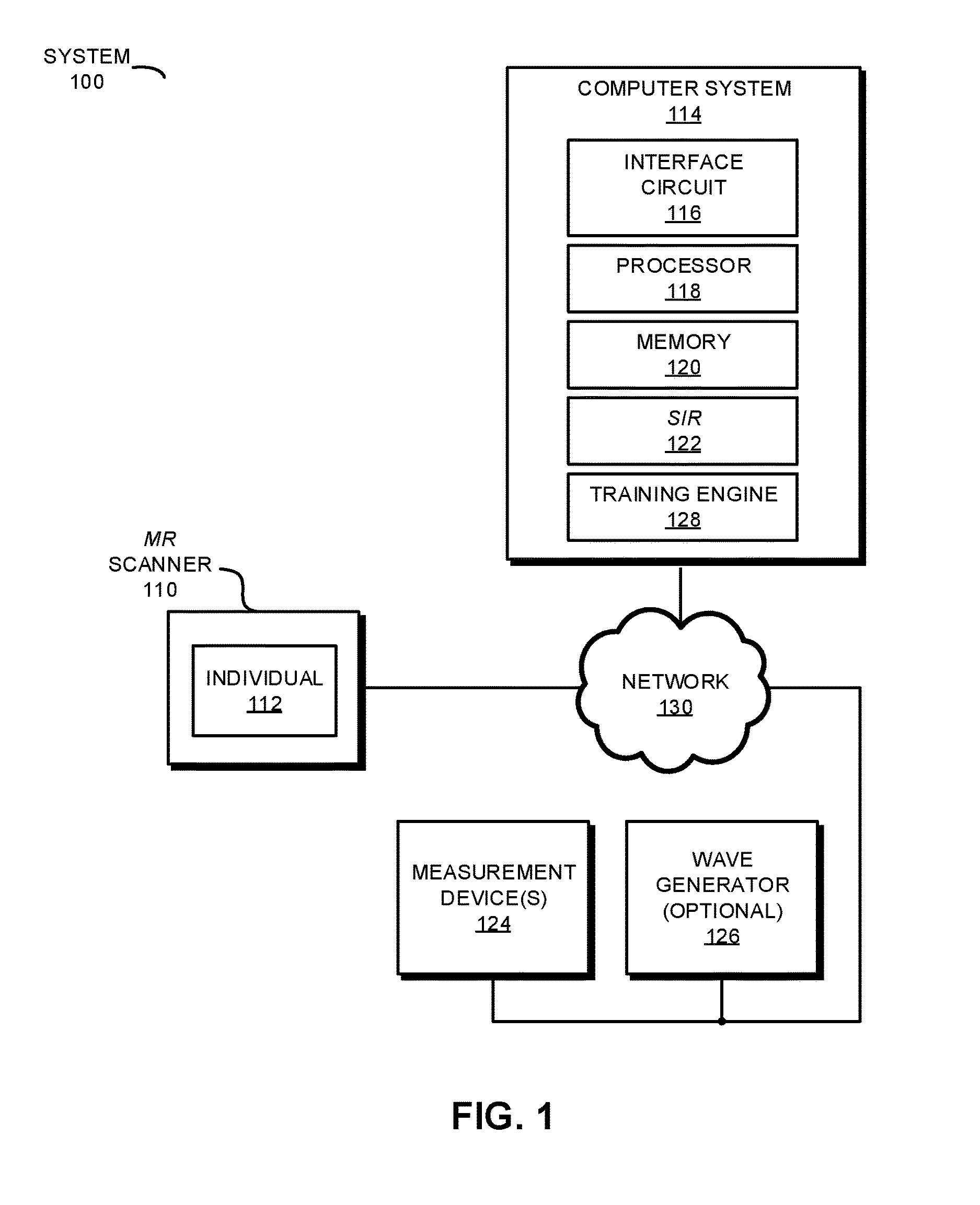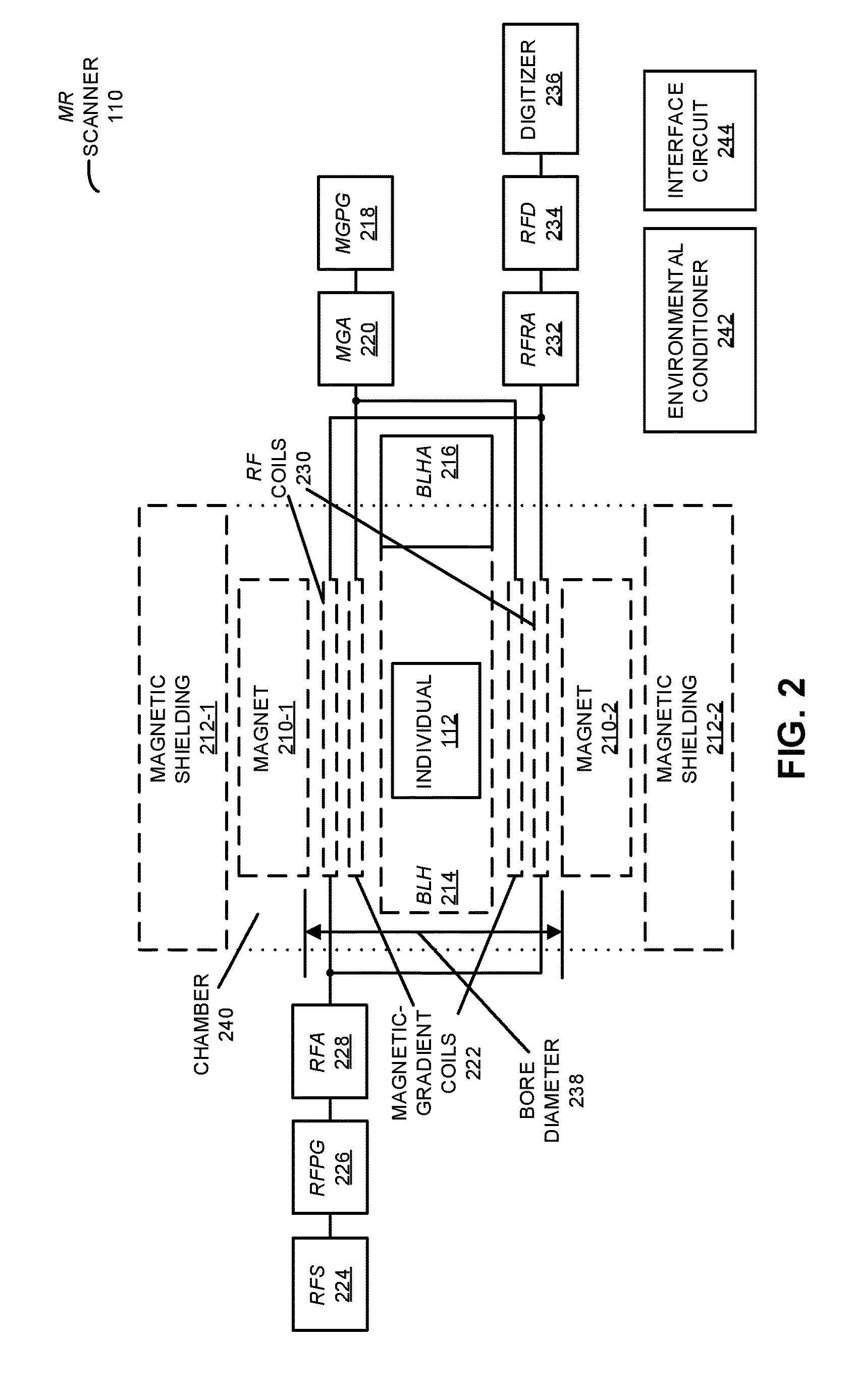Fast scaning based on magnetic resonance history
- Summary
- Abstract
- Description
- Claims
- Application Information
AI Technical Summary
Benefits of technology
Problems solved by technology
Method used
Image
Examples
Embodiment Construction
[0036]During operation, a system iteratively captures MR signals of one or more types of nuclei in one or more portions of a biological lifeform (such as a person) based on scanning instructions that correspond to a dynamic scan plan. The MR signals in a given iteration may be associated with voxels having associated sizes at 3D positions in at least a corresponding portion of the biological lifeform. If the system detects a potential anomaly when analyzing the MR signals from the given iteration, the system dynamically modifies the scan plan based on the detected potential anomaly, a medical history and / or an MR-scan history. Subsequent measurements of MR signals may be associated with the same or different: types of nuclei, portions of the biological lifeform, voxel sizes and / or 3D positions.
[0037]By dynamically updating the scan plan (and, thus, the acquired or captured MR signals), this measurement technique may facilitate fast MR scans. For example, an initial MR scan may use a...
PUM
 Login to View More
Login to View More Abstract
Description
Claims
Application Information
 Login to View More
Login to View More - R&D
- Intellectual Property
- Life Sciences
- Materials
- Tech Scout
- Unparalleled Data Quality
- Higher Quality Content
- 60% Fewer Hallucinations
Browse by: Latest US Patents, China's latest patents, Technical Efficacy Thesaurus, Application Domain, Technology Topic, Popular Technical Reports.
© 2025 PatSnap. All rights reserved.Legal|Privacy policy|Modern Slavery Act Transparency Statement|Sitemap|About US| Contact US: help@patsnap.com



